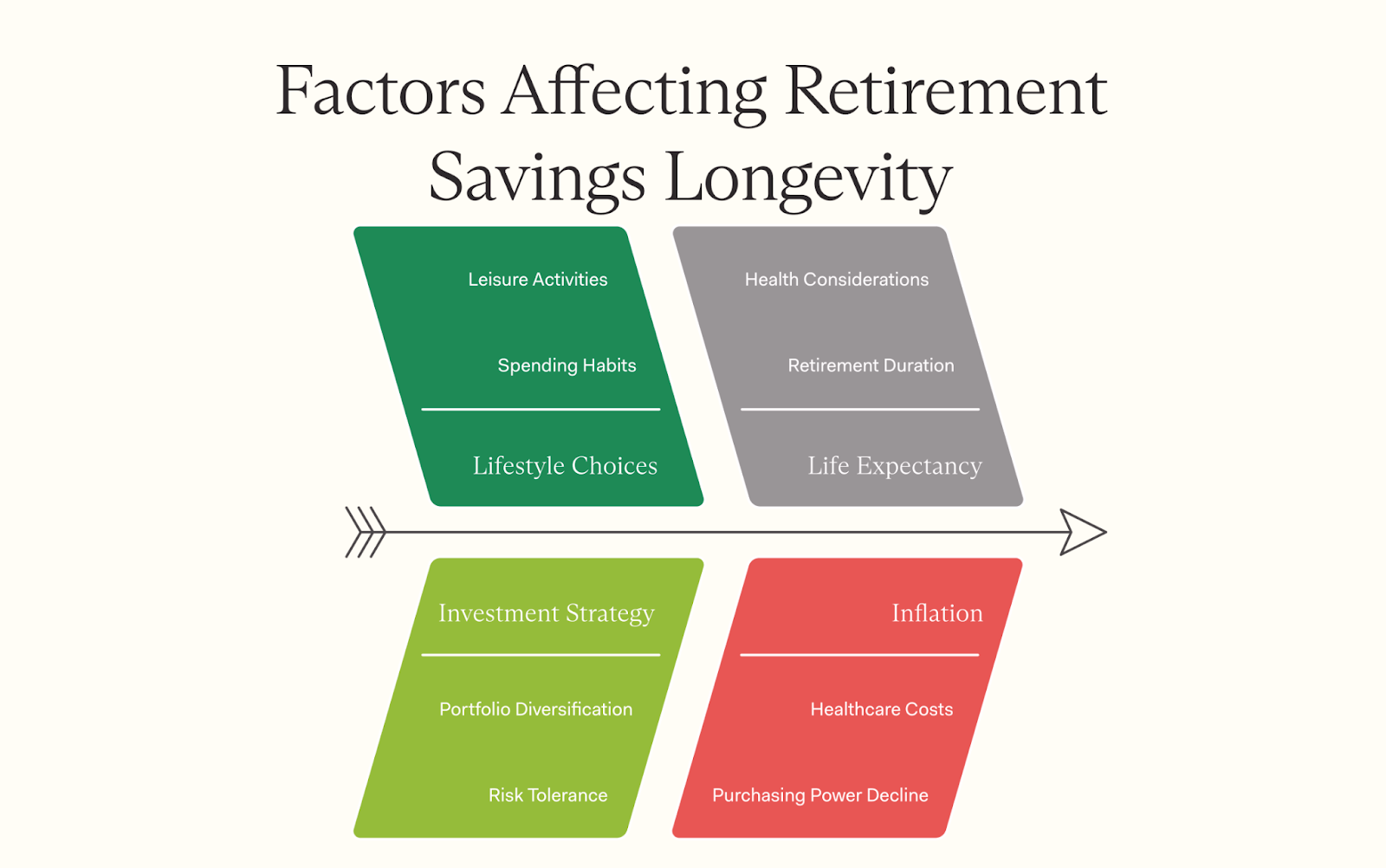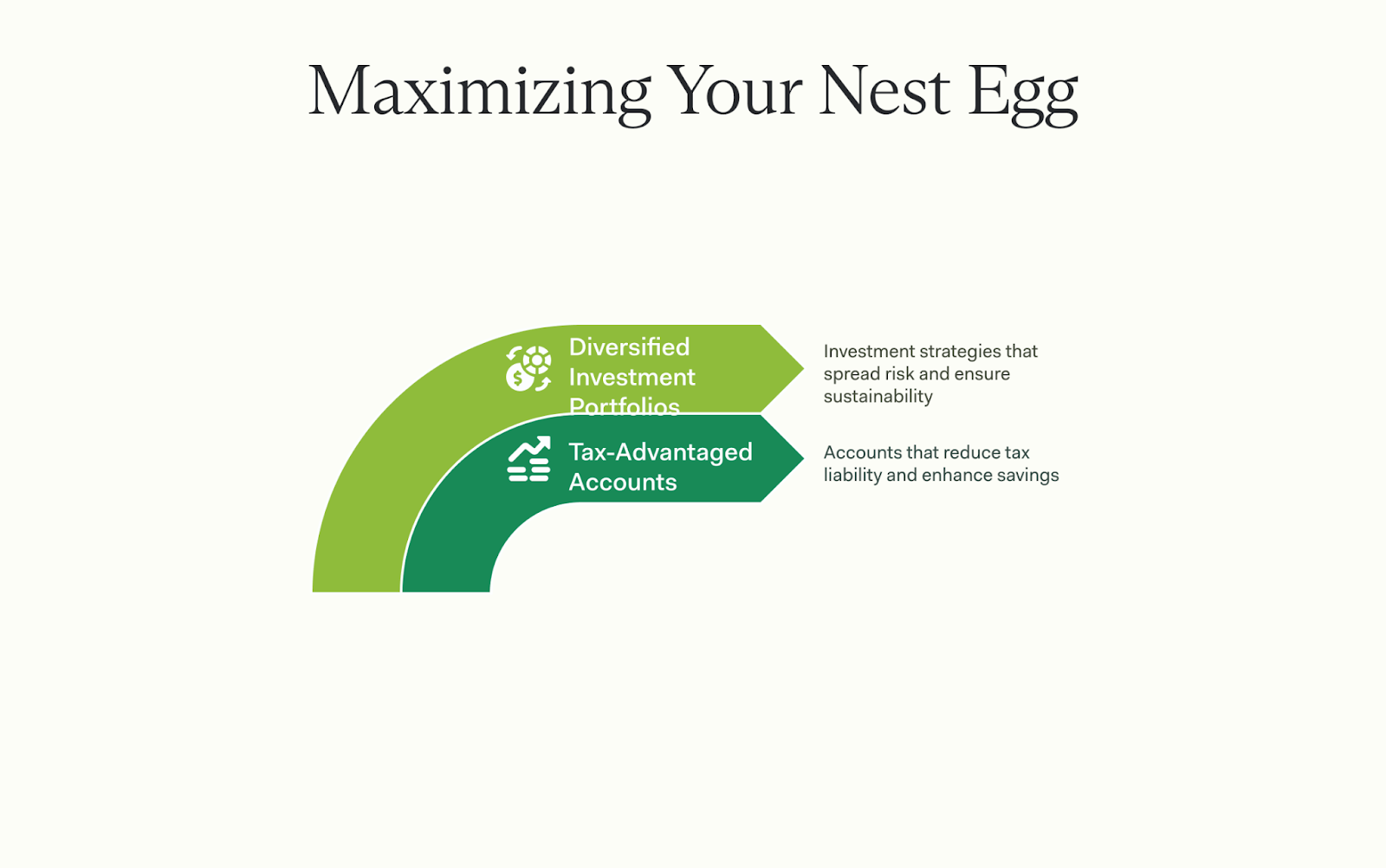Wondering if $3 million is enough to retire? Assess your financial readiness and discover what it truly takes to achieve your retirement goals. Read more.
A $3 million retirement fund sounds substantial—but will it last throughout your retirement? This sum faces challenges including inflation, market fluctuations, healthcare costs, and your personal spending habits.
Many retirees use the 4% rule as a starting point for sustainable withdrawals, but this needs adjustment based on your unique situation. Your location, lifestyle, and longevity expectations all affect whether this amount will provide lasting security.
This guide examines how various factors impact your retirement savings, helping you calculate realistic timelines and develop strategies to ensure your $3 million provides the comfortable retirement you've worked to achieve.
Retirement planning depends on a few key factors. Understanding these can help you plan effectively and ensure a smooth transition into the next phase of your life.
Whether $3 million will cover your full retirement depends on several key factors, outlined below:
These factors will play a crucial role in deciding if $3 million can support a comfortable retirement.
The 4% withdrawal rule is a common way to plan retirement income. It suggests that you can withdraw 4% of your savings each year without running out of money. With $3 million saved, this means you could take about $120,000 annually for living expenses.
This rule helps retirees know how much they can spend while keeping their nest egg intact.
However, factors like inflation and market changes can affect this number. Prices go up over time, so the amount you need might also increase. Consulting with a financial advisor can help create a solid retirement plan that fits your needs.
A good plan today is better than a perfect plan tomorrow.
While $3 million represents significant wealth, its longevity depends on your lifestyle choices, investment strategy, and life expectancy.

Life expectancy has increased. Many people now live into their 80s or even 90s. This means retirement can last a long time, sometimes for decades. If you plan to retire at age 65, your savings must cover many years of expenses.
Retirement duration matters when thinking about how much money you need. $3 million can stretch over a longer period if managed well. But be aware of rising healthcare costs as you age.
These costs can eat into your savings quickly and impact your comfortable lifestyle in retirement.
Inflation affects how much your savings can buy over time. When prices rise, the value of money goes down. Your $3 million may not stretch as far in 20 years as it does today. If inflation averages 3% a year, what costs $100 now will cost about $180 later.
This means you need to plan for increased retirement expenses. Your annual income might shrink if your savings don't grow enough to keep pace with inflation. Investing wisely can help maintain financial security throughout retirement.
Managing retirement expenses is key to staying on track with your budget. You need to know what you must spend versus what you want to spend... Healthcare costs can be big, so plan for them wisely.
Essential expenses are necessary for daily living. Discretionary expenses are optional and based on personal choices.
Balancing these expenses is key to managing retirement needs. Prioritize essential costs to ensure long-term financial security with your $3 million nest egg.
Healthcare costs can take a big chunk of your retirement savings. Many retirees face high expenses for medical care. On average, couples may need around $300,000 just for health care in retirement.
This number doesn’t include long-term care like nursing homes. Costs rise with age and can vary widely by location.
Health Savings Accounts (HSAs) help manage these costs. They offer tax advantages and allow tax-free withdrawals for qualified medical expenses. Planning early is key to cover unexpected costs later on.
Knowing how much you might spend helps shape your financial plan moving forward. Income sources in retirement play an important role too.
Income in retirement comes from different places. Social Security and rental income can help fill the gap. You might also consider annuities for steady cash flow. These options give you choices for a comfortable lifestyle.
Social Security benefits can help fund your retirement. These benefits come from the taxes you paid during your working years. They provide a steady income each month once you retire.
Most people start receiving these payments between ages 62 and 67, depending on their birth year. On average, Social Security replaces about 40% of pre-retirement earnings for many workers.
This might not be enough to cover all expenses—especially healthcare costs in retirement. Planning is key. You may want to explore other income sources like rental income or annuities to support your desired lifestyle after retiring early with $3 million in savings.
Rental income can be a solid source of cash flow in retirement. If you own rental properties, they can provide steady payments every month. This helps cover your living costs or lets you enjoy more leisure activities.
Using property wisely is key to building wealth.
Annuities also offer reliable income. You pay a lump sum upfront and get regular payments later—sometimes for life! They can give guaranteed lifetime income. Many people find this comforting when planning their finances for retirement.
Consider diversifying with both rental properties and annuities to maximize your $3 million for a comfortable lifestyle.
To get the most from your $3 million, consider using tax-advantaged accounts like Roth IRAs. A good mix of investments can also help grow your savings and lower your tax bill.

Tax-advantaged accounts help you save for retirement while paying less in taxes. Examples include Roth IRAs and employer-sponsored plans like 401(k)s. With a Roth IRA, your money grows tax-free, and withdrawals are tax-free too.
This means more cash in your pocket during retirement.
Using these accounts allows for potential catch-up contributions if you're over 50. You can also minimize taxes by placing investments that generate income in tax-advantaged accounts first.
This smart strategy boosts savings and helps your $3 million last longer.
A diversified investment portfolio spreads your money across different types of assets. This can include stocks, bonds, and real estate. By mixing these investments, you reduce risk.
If one area does poorly, others may do well.
For retirement with $3 million, this strategy is crucial. It helps protect against market changes and keeps your savings sustainable over time. You want to balance growth with safety to ensure a comfortable retirement lifestyle.
A good mix means you can aim for tax-free withdrawals from certain accounts too.
If you have $3 million in assets, retiring early may be tempting. But it comes with its own set of challenges, like planning for a longer retirement and managing your spending wisely.
Early retirement can sound great, but it comes with challenges. Many people don’t think about these before they decide to retire early.
Planning ahead is key to managing these challenges and achieving long-term financial security during early retirement with $3 million in the bank.
Challenges of early retirement can lead to tough choices. Planning for extended retirement years is key. You need to think long-term, especially if you plan to retire at 55. Life expectancy continues to rise, and many retirees may live for 30 years or more after they stop working.
Having $3 million helps but might not be enough without careful planning. Regular expenses will add up over time, so track your spending habits closely. Inflation also eats away at savings each year, making it essential to examine withdrawal strategies that keep money flowing in a sustainable way.
Knowing about tax-advantaged accounts can provide tax-free withdrawals when needed. Always consider all sources of income like Social Security benefits and rental income too; they play a crucial role in financial security during retirement years.
Determining whether $3 million will support your ideal retirement lifestyle requires a careful assessment of your spending priorities and what truly brings you fulfillment.
Assess lifestyle choices carefully. They have a big impact on retirement funds. Think about what you want to do after work. Do you plan to travel? Eat out often? Or stay home and enjoy hobbies? Each choice affects how much money you'll need to live.
Look at your current spending habits, too. Are there areas where you can cut back? For example, cooking at home is cheaper than dining out. This helps make $3 million last longer in retirement.
Adjusting your expenses now sets the stage for a comfortable future, like enjoying social security benefits or income from rental properties later on.
Adjusting spending habits is vital for a comfortable retirement. Review your expenses closely. There are essential costs, like housing and food, and discretionary ones, like travel or eating out.
Focus on cutting back where you can. For example, consider staying in more often to save money.
Think about how much you need each month. Using a retirement calculator can help here. If you're living off $3 million, you'll want to stick to a sustainable withdrawal rate of 4%.
This means withdrawing only what you need while keeping your savings intact. It’s crucial to manage healthcare costs too since they often rise as we age.
Retiring with $3 million can provide a comfortable lifestyle, but factors like inflation, market volatility, healthcare costs, and withdrawal strategies will determine how long your wealth lasts.
A Farther financial advisor can help you create a personalized retirement income plan, optimize your tax strategy, and ensure your investments align with your long-term goals.
Make the most of your retirement savings. Talk to an advisor today to build a secure financial future.
With $3 million in retirement assets, you've joined an exclusive group who can truly design their ideal retirement. This substantial portfolio, when managed strategically, offers the flexibility to create a legacy while enjoying lifestyle options unavailable to most retirees.
The 4% withdrawal framework serves as a starting point, but your wealth deserves a more sophisticated approach that optimizes tax efficiency across various accounts. Consider how inflation uniquely impacts luxury goods and high-quality healthcare in your planning.
By integrating multiple income streams and implementing advanced tax strategies, your $3 million can support decades of premium living while potentially growing for future generations—the true measure of successful wealth management.
Yes, most people can retire comfortably with $3 million in retirement savings. However, it's important to plan your withdrawals in retirement carefully to ensure long-term financial security.
The amount you need for a comfortable life varies based on lifestyle and expenses. Financial experts often suggest withdrawing a small fraction annually for sustainability.
Yes, if your money is stored in tax-advantaged accounts like employer-sponsored retirement plans or annuities, they can provide tax-free withdrawals at the federal level which aids wealth management.
Annuity distributions are a form of steady income during your potential retirement years that could supplement your other savings and investments.
Regularly reviewing your personal finance strategies along with investment advice from professionals helps ensure that your savings will last until your desired age of longevity.